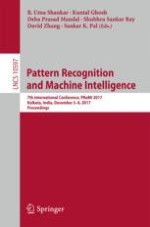2017 | OriginalPaper | Buchkapitel
Effectiveness of Mel Scale-Based ESA-IFCC Features for Classification of Natural vs. Spoofed Speech
verfasst von : Madhu R. Kamble, Hemant A. Patil
Erschienen in: Pattern Recognition and Machine Intelligence
Aktivieren Sie unsere intelligente Suche, um passende Fachinhalte oder Patente zu finden.
Wählen Sie Textabschnitte aus um mit Künstlicher Intelligenz passenden Patente zu finden. powered by
Markieren Sie Textabschnitte, um KI-gestützt weitere passende Inhalte zu finden. powered by
